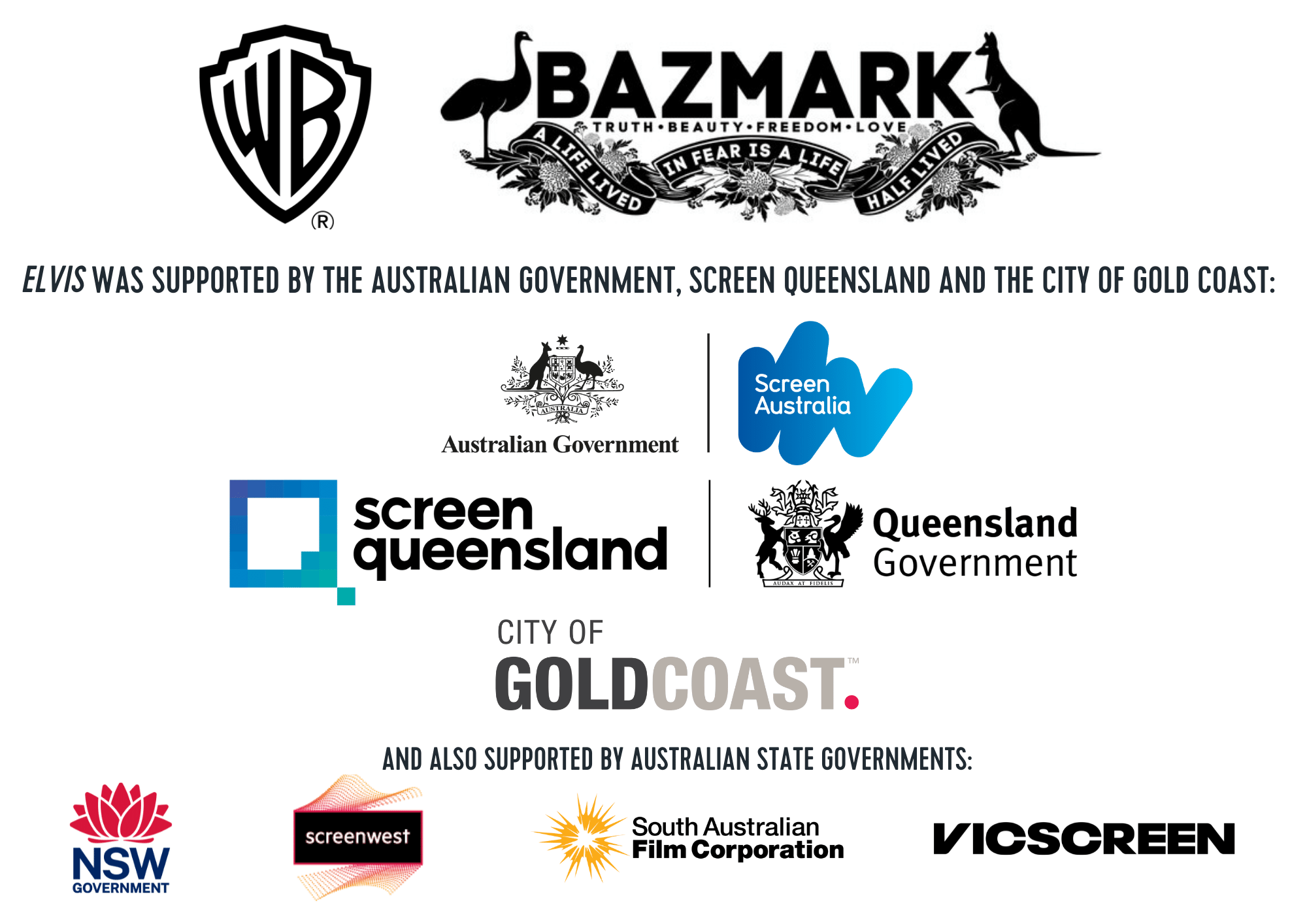Australia’s visionary producer/writer/director Baz Luhrmann, producer/production and costume designer Catherine Martin, and Warner Bros. Pictures, Bazmark and the Jackal Group teams have done it again! The long wait is over, and the epic big-screen feature we all want to watch – ELVIS – is finally here.
Starring Austin Butler as rock ‘n’ roll icon Elvis, Tom Hanks as his manager, Colonel Tom Parker, and Australian native Olivia DeJonge as Priscilla.
Produced by Baz Luhrmann, Catherine Martin, Gail Berman, Patrick McCormick and Schuyler Weiss. Executive produced by Toby Emmerich, Courtenay Valenti and Kevin McCormick. Screenplay by Baz Luhrmann & Sam Bromell and Baz Luhrmann & Craig Pearce and Jeremy Doner, story by Baz Luhrmann and Jeremy Doner. With Australian Mandy Walker in charge of orchestrating the beautiful cinematography.
The film had its world premiere at the Cannes Film Festival last month and made headlines for a 12-minute standing ovation. The film will open globally in cinemas from June 23-24.

Credit: Kane Skennar. © 2022 Warner Bros. Entertainment Inc. All Rights Reserved.
MAKE IT IN AUSTRALIA
Filmed in Australia on the Gold Coast in Queensland at Village Roadshow Studios, the film was supported by the Australian Government through the Producer Offset, the Queensland Government through Screen Queensland and support was also provided through City of Gold Coast’s screen, arts and culture programs.

a Warner Bros. Pictures release. © 2022 Warner Bros. Entertainment Inc. All Rights Reserved.
VFX, post, sound, music and editorial services were provided by thirteen of Ausfilm’s talented post and VFX members out of Queensland (Brisbane & Gold Coast), New South Wales (Sydney), South Australia (Adelaide), and Victoria (Melbourne). Read more about the outstanding companies who supported this production below.
Competitive screen incentives support for post, sound, music and VFX were provided by the Queensland Government through Screen Queensland, the City of Gold Coast, the NSW Government through Screen NSW, the West Australian Government through Screenwest, the South Australian Government through the South Australian Film Corporation and the Victorian Government through VicScreen. Further information on how to access these government screen incentives is detailed below or calculate your saving using Ausfilm’s Australian Screen Incentives Calculator here.
FILMED ON THE GOLD COAST IN QUEENSLAND
Warner Bros. Pictures’ Elvis was filmed on the Gold Coast, in Australia’s “sunshine state” of Queensland, taking full advantage of the region’s diverse locations, world-class facilities, and expert local crew base, as well as attractive financial incentives from all three levels of government: Federal, State and Local.

The Gold Coast is one of the country’s busiest and most highly renowned screen industry hubs. The city is home to a huge number of experienced crew, due to a 30-year track record of international production attraction.
Recently secured productions to Queensland include Nautilus (Disney+, in production now) Spiderhead (Netflix), Thirteen Lives (Directed by Ron Howard, MGM), Ticket to Paradise (Universal Pictures), Young Rock Season 2 (NBC Universal), and The Wilds Season 2 (Amazon Prime Video).
“I really think the Gold Coast is particularly engineered for filmmaking”
Director/Writer/Producer Baz Luhrmann (Source: Australian Financial Review, 2021)

“I cannot emphasise enough how lucky we feel in the current climate that the state of Queensland, and Queenslanders in general, have been so supportive of this film.”
Director/Writer/Producer, Baz Luhrmann Source: Screen Queensland press release, 2020
The Gold Coast is famous for its beautiful sub-tropical climate, 57 kilometres (35 miles) of coastline, 260 kilometres (161 miles) of waterways and world heritage-listed rainforests. The diverse range of accessible locations allows for any landscape to be replicated within the region – Las Vegas, Palm Springs, Hawaii, Acapulco and more.

Image Courtesy of The Pink Hotel, Coolangatta, Queensland
Panoramic city views, country vistas, beautiful beaches, and subtropical rainforests, together with a blend of architecture and scenic roads, all lie within a 30-minute radius of Village Roadshow Studios, where the Elvis production was stationed.
Luhrmann’s impression of the Gold Coast as a movie-making destination has been fortified after his experience of making Elvis, telling reporters, “Magic! The Goldie (The Gold Coast) is Golden. I say it because we’re buying space here, we’ll make more movies here, it’s a special part of the world.” Source: ABC News.
The production made full use of the studio’s ample facilities, as well as spacious backlots for large and complex constructed sets accessed through the assistance of the City of Gold Coast.

The Queensland Government supported the film through Screen Queensland, via their Production Attraction Strategy. The incentive is available to productions with a minimum spend of A$3.5 million in the state. Screen Queensland also offers location assistance, including scouting, script location breakdowns, bespoke presentations and long-term production liaison.
City of Gold Coast provided a further financial benefit to the production with their Screen Attraction program – the only local government incentive in Australia. Productions with a minimum spend of A$750,000 in the region are eligible to apply. Both of these state and local incentives are available in conjunction with the Australian Government’s Producer Offset, Location Offset, Location Incentive or the PDV Offset.

For more information, contact:
Screen Queensland
Naomi Wenck – Production Attraction Director
[email protected]
Learn more
City of Gold Coast
Gabrielle Jones – Film and Television Advisor
[email protected]
Learn more
VILLAGE ROADSHOW STUDIOS HOME TO ELVIS & BAZMARK
Village Roadshow Studios was home to Elvis during the entire production, from commencement in October 2019 through to production wrap in 2021.

The studios provided nine sound stages, workshops, offices and a multitude of studio solutions for the specific requirements of the production. This included renovating offices in order to create seamless working environments and an update on all operational procedures by introducing COVID-safe formalities to enable a secure working environment. As the production occupied the entire studio complex, including all sound stages, collaboration between the Elvis production team and Village Roadshow Studios remained supportive and collaborative and ensured the studio site was COVID compliant and always maintained at the highest level.
Right: Baz Luhrmann on set at sound stage 9, Village Roadshow Studios. Source: Instagram
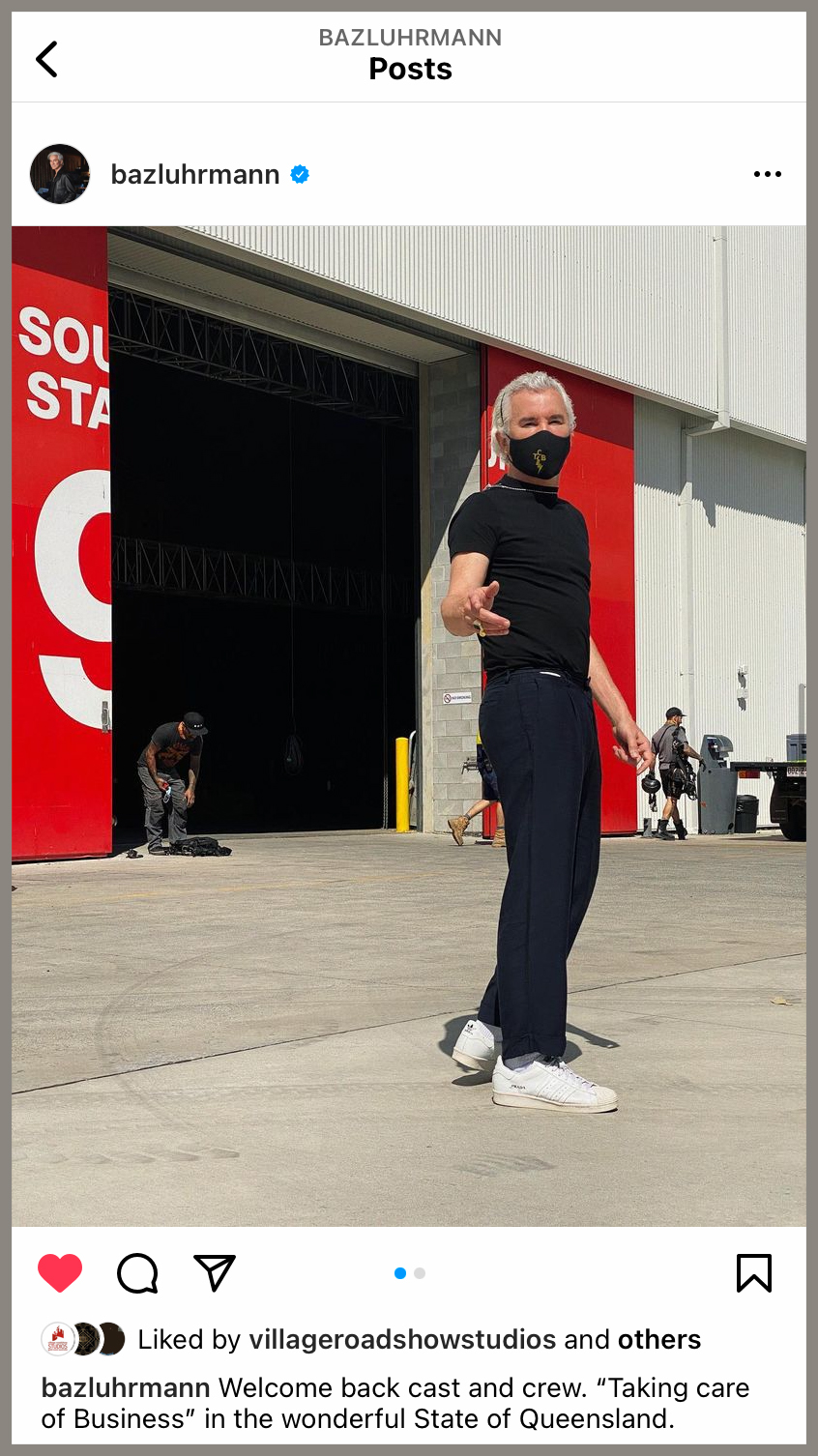


Visit Village Roadshow Studios.
POST & SOUND PRODUCTION
BIG BANG SOUND DESIGN CREATE THE SONIC LANDSCAPES
Big Bang Sound Design’s latest collaboration with filmmaker Baz Luhrmann was a dream come true for Sound Designer, Supervising Sound Editor and Re-recording Mixer, Wayne Pashley. After a 30-year relationship with Luhrmann that began with Strictly Ballroom in 1992, Wayne was thrilled to receive the call in 2019 that the long-anticipated Elvis project was set for production. As a life-long Elvis Presley fan, he knew that the story, told through the eyes of the remarkable Bazmark team, would be the stuff of career dreams.

Credit: Hugh Stewart. © 2022 Warner Bros. Entertainment Inc. All Rights Reserved.
“My aesthetic vision for Elvis required a multi-layered construction that was a monumental challenge. Wayne was able to fulfill my vision by creating a sonic architecture that I believe is without equal in filmmaking today.”
Baz Luhrmann, Director/Screenwriter/Producer, Elvis
Entirely responsible for the sound post-production, the team at Big Bang Sound set out to create one of the most complex soundscapes they’ve ever been involved with. The story sweeps through four decades, from Elvis’s childhood growing up in Mississippi, through his meteoric rise to mega-stardom in the 1950s, the turmoil of the `60s and his passing in the late `70s.

© 2022 Warner Bros. Entertainment Inc. All Rights Reserved.
The complex weave of music and sound effects is a main driving force of the sound design for Elvis. With a combination of playback recording, and live musical recording, fully restored vintage microphones from each era were used to capture performance pieces, and seamlessly integrate new recordings with original Elvis vocals.
Classic cars, many imported from the US, especially for the film, were recorded, along with hundreds of vintage props sourced by the production designers.
With a cast of more than 30 speaking characters and crowd scenes involving hundreds of extras, the task of recording ADR and vocals was a major undertaking. The film was also impacted by the global COVID pandemic, which affected traditional recording practices, ADR and crowd sessions.
At one point, Austin Butler, the American actor who plays Presley, was on the Warner Bros. lot in Los Angeles; accent and dialogue coach Tim Monich was in New York, and sound designer Wayne Pashley was in Sydney. New technologies were implemented to tackle the challenges, enabling multiple recording spaces to be linked into one session. The seamless remote monitoring took place across multiple states and countries simultaneously.
In a film where sound is such an important part of the story being told, the Big Bang crew were thrilled to be an integral part of the creative team responsible for bringing Elvis to life on the big screen.

Image right: (l-r) Austin Butler as Elvis and Kelvin Harrison Jr. as B.B. King in Warner Bros. Pictures’ drama Elvis, a Warner Bros. Pictures release. Credit: Kane Skennar. © 2022 Warner Bros. Entertainment Inc. All Rights Reserved.

Contact the Big Bang Sound Design team.
CUTTING EDGE DELIVER DIT & DAILIES
Before principal photography commenced, Cutting Edge provided dailies for the Elvis production team and collaborated with The Post Lounge by supplying Cutting Edge’s editorial suites, production offices and review suites on the Village Roadshow Studios lot during the shooting of the production.

Credit: Hugh Stewart. © 2022 Warner Bros. Entertainment Inc. All Rights Reserved.
Cutting Edge set up the pipeline for the show in pre-production, working closely with the camera, editorial, and post-production departments to research and develop ACES colour pipelines, format and resolution specifications from the ARRI 65 through to the VFX and editorial teams.
During pre-production in 2019 and into early 2020, the CE team provided complete DIT services with Australian Cinematographer Mandy Walker (ACS ASC). It culminated in the Cutting Edge Theatre at Village Roadshow Studios, boasting a new Christie projector and screen.
Cutting Edge worked closely with Australian-based Panavision Asia to support lens and camera testing. They also collaborated with David Lee to support the sound department in tackling the challenging mix of on-set microphones and live music. The brilliant minds at Cutting Edge were also able to assist Mandy Walker by building a pipeline that supported Ms Walker’s cinematic vision and created a smooth transition from production into post-production, VFX and editorial.
Visit Cutting Edge.
SOUNDFIRM
Soundfirm provided ADR Recording and VFX reviews for Elvis.

Credit: Kane Skennar. © 2022 Warner Bros. Entertainment Inc. All Rights Reserved.
Visit Soundfirm.
SPECTRUM FILMS’ MIXES ELVIS IN ITS DOLBY ATMOS THEATRE
Spectrum Films provided services for the sound pre-mixing and Dolby ATMOS, 7.1 and 5.1 final mixes within their large Dolby ATMOS theatre at Fox Studios.
The theatre utilised its existing AVID S6 console and a new S4 mixing desk with four new MacPro ProTools systems.
Spectrum Films also provided additional post-production support for Elvis in Sydney, including editorial and production suites, remote 4K Digital Intermediate & VFX screenings using the Colorfront secure remote streaming system.
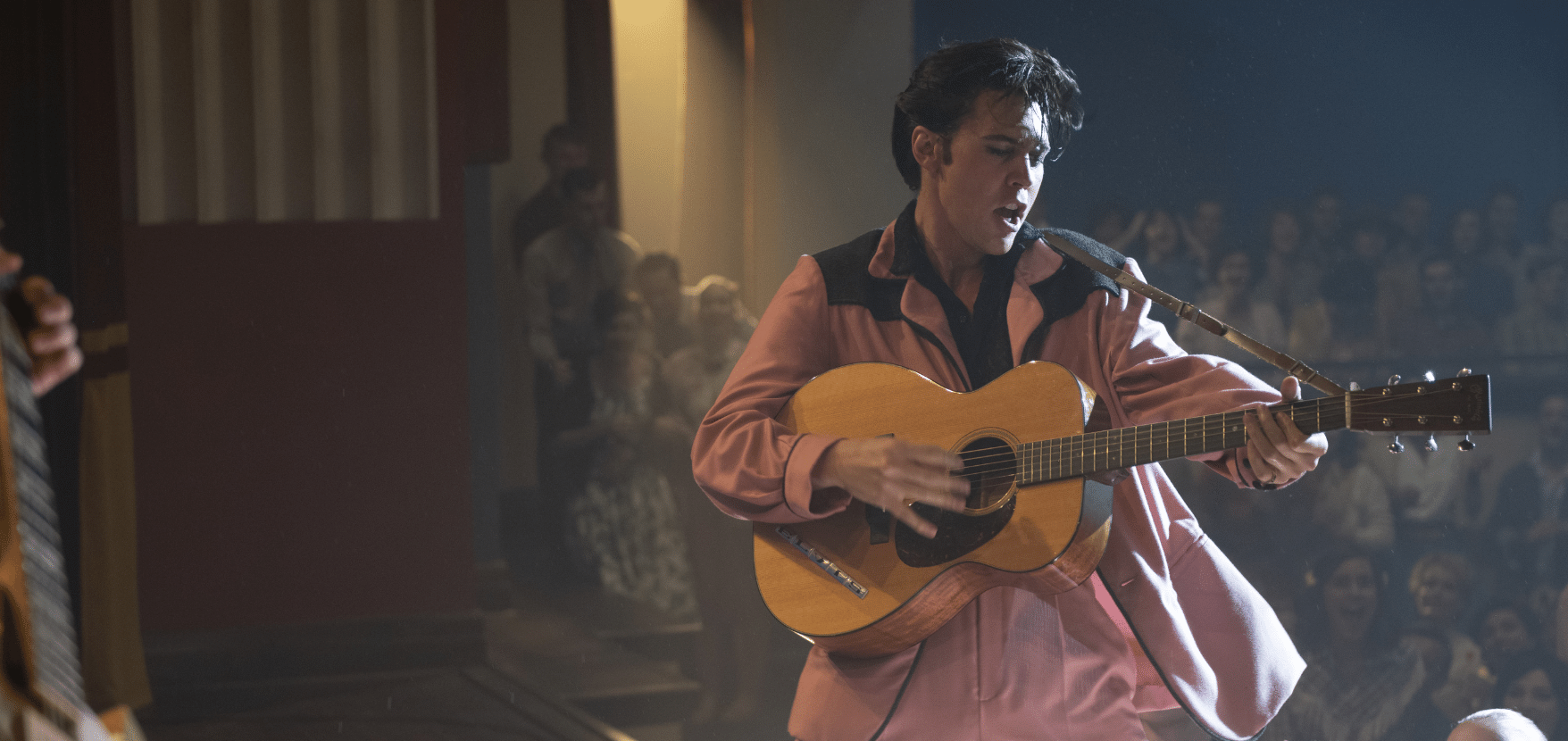
Bros. Pictures release. Credit: Hugh Stewart. © 2022 Warner Bros. Entertainment Inc. All Rights Reserved.
Contact Spectrum Films.
THE POST LOUNGE: TAKING CARE OF POST BUSINESS
As the sole vendor of Digital Intermediate post-production, The Post Lounge (TPL) provided all grading, conform, mastering and online editing for the production of Elvis. The TPL crew were the primary vendor of digital dailies services (crew and equipment), for the full production, from commencement of principal photography.

TPL were the primary provider of all editorial equipment for the duration of the production’s editing phase, which spanned over 20 months and required the use of TPL’s screening rooms and their state-of-the-art post facilities in Brisbane and Sydney.
The talented TPL crew designed and installed 11 editorial systems, a custom-built 4K DI and 5.1 review screening theatre, as well as delivered equipment and technical support for the production’s offices on the Gold Coast.
The Post Lounge team also designed a contemporary studio space for Director Baz Luhrmann and his team at the production base in Village Roadshow Studios and the Elvis production offices off the studio lot, on the Gold Coast.

The TPL team also applied their expertise in establishing 4K streaming solutions for remote working and technical support, enabling the elaborate production process to run as smoothly as possible across two states.

Contact The Post Lounge.
AUSSIE VISUAL EFFECTS
SCANNING THE ROCK ‘N’ ROLL ICON WITH AVATAR FACTORY
Avatar Factory were the sole provider of all cyber scanning services for the production of Elvis. The Avatar Factory team successfully completed all production scanning requirements, which included scanning of talent, main cast, extras, props and even some animals!
On busy days the process involved scanning over 100 extras in just a few short hours, or roughly 75 seconds per person to instruct, capture and check.

The Australian family-run Avatar team established effective workflow solutions, which resulted in the enormous task of efficiently cataloguing a very extensive volume of scans required for this large-scale production.
During the production, Avatar Factory decided to offer their mobile services in their state-of-the-art Avatar Truck, which allowed the team to follow the production across locations, with a set-up time of just one hour.
The change was extremely beneficial to the business and has been an integral part of Avatar’s increasing list of successfully captured high-end productions, including Mortal Kombat (New Line Cinema), Gods’ Favorite Idiot (Netflix), La Brea (NBCU), Foe (Amazon Studios) and a few more exciting yet-to-be-released projects.

Mark Ruff, Managing Director of Avatar Factory expressed his gratitude and enthusiasm for working on the production of Elvis. Describing it as incredibly rewarding “working on a production of this scale has enabled our team to adapt and grow the company, including completely changing our mode of operation and enabling mobile scanning to take place on location.”
Visit Avatar Factory.
FIN DESIGN + EFFECTS DELIVERS 180 SHOTS ACROSS THREE SEQUENCES
FIN teamed up with VFX Supervisor Tom Wood and VFX Producer Fiona Crawford to deliver 180 shots across three sequences on Baz Lurhmann’s Elvis.

Known for executing complex visual effects Sydney based, FIN applied its skill by producing stunning recreations of Tupleo Town, Elvis’s Louisiana Hayride show and Los Angeles Airport.
Additionally, FIN worked closely with the editorial and post-production teams on a multitude of musically driven ‘digital optics’ sequences for the film.
“We were tasked with a large body of work that needed considerable creative and technical input,” explains FIN Head of Visual Effects, Alastair Stephen, “the work was varied in its scope and required all aspects of FIN’s artistry to produce.”
HAYRIDE, LOUISANA
In the Louisiana Hayride sequence, FIN needed to authentically recreate the full auditorium and the audience. Production shot a large number of ‘sprites’ (a digital audience) to be used within this environment and they had specific actions to build up the exhilaration of the crowd.

FIN Compositing Supervisor Aaron Barclay explains, “These ‘sprites’ needed to be categorised based on the actors, the action, the angle the camera was shooting them at, as well as the direction that their chair faced so that we could put them together into a large particle system and get a proper orientation to the camera.
“We utilised the Nuke 3D particle system to handle the placement and orientation of each of the cards within a 3d space aligning to the CG seat placements that were in the digital Hayride set. Each individual ‘sprite’ could be offset and adjusted to get the best performance for each shot. Having all this kept within Nuke allowed for a much higher degree of control in integrating the crowd into the plate, thereby giving the ability to get nicer falloff around lights and blend the crowds into the shadows seamlessly. The final pictures must have complete authenticity.”
LOS ANGELES AIRPORT
FIN’s biggest challenge was the jet sequence that occurs at Los Angeles Airport. FIN CG Supervisor Juri Mejan-Fripp explains, “We had a very sparse and empty space that we needed to fill with LAX. There was very little on set: a set of stairs, the cars and the actors.
“We started with aerial maps of LAX to build the base structure of LAX airport, we had a few landmarks that we knew we wanted to make the hero, the LAX Theme building being the key landmark to mark this as LAX. Once we had a solid foundation of the layout that worked, we could push work on getting all the assets to final quality and create a distant environment through DMP.

“The vibe for the area around Elvis was to be the private jet hangars so taking period references, we built CG versions of private jets and hangars and started to dress these into the area to give visual interest for this vast space, while not taking away from the emotional storytelling that is the most important aspect of this sequence.”
Juri said “The Lisa Marie jet digital asset required extensive research and the team went to considerable lengths to achieve realism. While there is a lot of great photographic reference to go off as the plane is sitting in Graceland, the plane has deteriorated quite a lot, so the team needed to come up with a brand new, looking version of the Lisa Marie jet, that had all the polish and detail required to hold up to a large variety of shots.
Using blueprints of the Convair 880 as well as the photographic material of the Lisa Marie jet we went through and built all the details to be able to see the plane in all her glory.”
FIN has a history of delivering seamless visuals for its clients and this film was no exception.

“We were truely humbled with the opportunity to collaborate so closely with Baz Lurhmann, Catherine Martin and the entire team at Warner Bros. on this once in a lifetime project. We are extremely proud of what the FIN team has produced. You don’t get opportunities like this very often and the key to its success was the collaborative approach Tom and Fiona brought to the table, coupled with the exceptional Artists in our team at FIN.”
Alastair Stephen, Head of Visual Effects, FIN
Contact: Alastair Stephen
Social Media: Instagram | Linkedin | Twitter
Visit FIN Design
LUMA RECREATE HOLLYWOOD & GRACELAND
On Elvis, Melbourne-based Luma Pictures handled major environmental work for recreations of the Hollywood Sign in the Hollywood Hills and Graceland, requiring the 75-person Luma team to work with both reference photography and data captured on-site in order to bring these iconic settings to life in a way that was both artistic and true to the period.

Because these settings carry such a rich, storied history, Luma’s art department and VFX team were tasked with a tightrope act, maintaining historical accuracy while still evoking the fantastical, legendary nature of these locations.
Director Baz Luhrmann is known for his strong, precise vision, so the many concepts developed by Luma’s art department became fundamental to this project.
Pre-visualisation was requested at every stage, with the director signing off on each before moving forward. Because conceptualisation was required throughout the life of the project, the pipeline of concept art to VFX was unusually fast and dynamic.
The concepts proved extremely useful. Luma’s VFX team constantly referred back to their art department’s initial sketches for inspiration and guidance, their concepts becoming a de-facto blueprint for other departments to reference throughout production.

The success of these mockups can be attributed to the team’s studious approach, which found them utilising geometry, scans, on-site photography, and street data from Google to bring their meticulous vision to life, right down to capturing exactly where certain trees were planted at that time, at that location.
Luma’s DFX Supervisor, Adam Hammond—who took a major role in liaising between the art department, VFX team, and the client—explains more about this high level of detail.
“Graceland is one of the most famous and photographed homes in the world, and Luma’s task was to seamlessly transport the characters and the viewers to that location.”
Adam Hammond, Luma’s DFX Supervisor
Hammond stated, “We used period photography in conjunction with modern-day on-location reference to accurately recreate the Graceland House and grounds across three decades and multiple seasons.”
“In our work, you will see the house and grounds evolve over the years. The trees grow and home improvements are all accurately represented.”
Adam Hammond, Luma’s DFX Supervisor
Hammond continues, “Part of the process of finishing the shots was first to achieve a photoreal environment. Then in comp we could dial into the more stylised, creative choices of the director.”

This need for accuracy and detail also brought Luma out to the Hollywood Sign to capture more reference data. Hammond states, “For the Hollywood sequence, team members from our LA office went on location at sunrise and conducted extensive photography of the hillside around the Hollywood Sign and of the valley below. The photogrammetry and panoramas they produced were essential to the success of the sequence, forming the basis of all DMP work.”

Luma Pictures is proud to have helped bring the vision of Elvis to life, and to have contributed to a project that features the work of so many impressive and talented Australian vendors.
Visit Luma Pictures Melbourne.
METHOD COLLABORATES ON THEIR THIRD PROJECT WITH BAZ LUHRMANN
Method Melbourne’s work on Baz Luhrmann’s new big-screen Elvis drama marks their third collaboration with the director. VFX supervisor, Josh Simmonds, breaks down some of their noteworthy sequences for the film.

“For the Beale Street scenes, Method was tasked with augmenting the elaborate set piece for both day and night sequences. This involved meticulous historical research, in partnership with the production art department, to be true to the original architecture and signage. We also digitally extended the crowd action on the street, using our custom crowd system and vehicles from the era.” said Josh Simmonds, Method’s VFX Supervisor.

Creating Elvis’s Russwood Park concert was another significant undertaking, according to Simmonds. “We built the entire stadium and surrounds based on historical reference, but this time populating it with a large crowd of digital extras. Costuming was very specific, so we had to ingest more than 100 individual scans of extras, rather than use a smaller number and vary clothing and skin colour, as is our normal approach.

The team set up an efficient pipeline that automated a lot of this ingest, and fed directly into our motion-capture-based crowd system. Composite work was also challenging; there was a lot of atmosphere and flare from the set lighting that we had to match, to create a believable stadium feel.”

“It’s always a thrill to be working on one of Baz Luhrmann’s films; helping to breathe life into his singular vision, and working with the magnificent production design of Catherine Martin. We’re really pleased with what our crew was able to accomplish, and we’re grateful to the production team and Warner Bros. for getting us involved.”
Josh Simmonds, Method VFX Supervisor

Visit Method Studios.
MPC BRING ELVIS’ ICONIC PERFORMANCES TO LIFE
Led out of MPC’s Adelaide studio, VFX Supervisor David Crawford and VFX Producer, Thandiwe Philips delivered 150 shots for Elvis.

© 2022 Warner Bros. Entertainment Inc. All Rights Reserved.
MPC was tasked with looking after the builds and sequences taking place during Elvis’ legendary time performing at the International Hotel Ballroom in Las Vegas. This included full CG crowds and digital environment enhancements.

© 2022 Warner Bros. Entertainment Inc. All Rights Reserved.
In order to achieve the CG crowds, the team generated texture variations across shared models to quickly build a large asset library of crowd characters. The team then filled out the environment with several builds with varying behavioural traits (such as ambient, watching the show, clapping and cheering). These were then comped into sequences based on Elvis’s performance on stage.

© 2022 Warner Bros. Entertainment Inc. All Rights Reserved.

© 2022 Warner Bros. Entertainment Inc. All Rights Reserved.
Using non-simulation-based Houdini setups, allowed the team to quickly iterate where needed while still allowing for more freedom in the art direction. A sequence-based rendering solution was also put in place, for the team to implement creative changes and update whole sequences at once.

© 2022 Warner Bros. Entertainment Inc. All Rights Reserved.
The team was also tasked with enhancing the International Hotel Ballroom itself, augmenting and digitally extending sets, and adding various prop elements to scenes.

© 2022 Warner Bros. Entertainment Inc. All Rights Reserved.

© 2022 Warner Bros. Entertainment Inc. All Rights Reserved.
Visit MPC.
RESIN DELIVER 200 SHOTS ON ELVIS
Resin loved every moment of working on Elvis. The opportunity to collaborate with the film’s director, Baz Luhrmann, and his brilliant VFX team, including Australian VFX Supervisor Tom Wood and VFX Producer Fiona Crawford, was an absolute pleasure for the Adelaide-based studio.

Resin’s team of 11 VFX artists completed approximately 200 shots for Elvis. They were steadfast in bringing authenticity to the way the shots told a story of the music industry in the 1950s, the rise to fame, and the indelible personalities of Elvis and Colonel Tom Parker.

Over a period of approximately 12 months, Resin provided pre-visualisation for several hundred shots and then moved on to produce 200+ VFX shots and various assets.
Resin worked on key sequences of the film, including Colonel Tom Parker’s dream sequence, the famous CBS Studios and the final hero shot of the film.

Testament to Resin’s capability, quality, and efficiency, was the scope of work continued to expand as they were engaged to work on other scenes in the film. A highlight of their contribution to the film, was their work with Tom and Fiona to develop and execute an entirely new approach to Colonel Parker’s dream sequence in keeping with Luhrmann’s vision.

An overview of the VFX work they completed includes full CG shots, set extensions, bluescreens, cosmetic corrections, replicating and syncing over 400 guitarist performances on a 3D virtual set and bringing the CBS Studios control room to life to reflect the look and feel of the era with environment extensions, stage integrations, performance integrations, broadcast monitors and equipment in the control room.


Entertainment Inc. All Rights Reserved.
“Resin is proud of the VFX produced for Elvis by our brilliant team of artists and the work by our sister company, The Post Lounge, who provided post-production services.”
Lincoln Wogan, Managing Director, Resin

Visit Resin.
RISING SUN PICTURES RECREATES LAS VEGAS FOR BAZ LUHRMANN’S ELVIS
The Adelaide-based studio also uses innovative machine learning tech to magically blend actor Austin Butler with the real Elvis in vintage movie clips.

Rising Sun Pictures (RSP) was a key visual effects provider and creative partner for Elvis¸ the much-anticipated new film from Oscar-nominated director Baz Luhrmann and Warner Bros. Pictures. Encompassing more than 160 shots, RSP’s work included large-scale, historic reproductions of the Las Vegas Strip and the Daytona Beach Boardwalk. The studio also employed groundbreaking artificial intelligence technology to integrate actor Austin Butler (who plays Elvis) into actual clips from Presley’s movies. The South Australian Government also supported the visual effects for this film through its 10 percent PDV incentive.

RSP’s team was led by VFX Supervisor Julian Hutchens, VFX Producer Jeanne-Elise Prevost, CG Supervisor Mathew Mackereth, Compositing Supervisor Guido Wolter and Executive Producer Meredith Meyer-Nichols.

RSP’s principal task involved building a massive digital reproduction of the International Hotel, its surrounds and the Las Vegas Strip as it appeared in the late `60s and early `70s. The extensive CG environment is featured during many pivotal scenes throughout the film and also witnessed through the windows of a penthouse apartment on the 30th floor of the International Hotel, where Elvis lived during his legendary residency. Live-action portions of the hotel interior were shot on sets at Village Roadshow Studios in Oxenford, Queensland.

The Las Vegas exterior was created with an eye toward photo-realism and historical accuracy. RSP modelled the geometry for the International Hotel by referencing the original blueprints used in its construction. Surrounding casinos, hotels, streets, neon signage and other features were based on voluminous photographic, archival footage and satellite imagery, including vintage postcards and travel brochures.

RSP drew on current geographical data to accurately reproduce the topography of Las Vegas and its environs. “We mapped out the streets all the way to the rugged surrounding mountains, then reduced the urban sprawl back to 1969 levels by lining up cameras to vintage aerial photography, explains Hutchens. “We then used a combination of photography and data collected on the street to place structures where they were situated in the sixties.”

“This was primitive technology, and it was important when recreating it digitally to capture that visual quality even down to the occasional malfunctioning or broken bulb. Our modellers counted every bulb and our look development artist analysed each sign’s unique neon cycle to capture the authentic look and motion from that period.” Julian Hutchens, RSP VFX Supervisor

The RSP artists were meticulous in matching the iconic neon lighting employed in Las Vegas at the time, including the giant Elvis sign that stood in the car park of the International Hotel. “We went to great lengths to make the signs look like neon, which included the analog flicker that they produce.” Hutchens says.

Other details included 1960s-era cars and trucks, billboards, traffic signs and palm trees glimpsed on the streets below the hotel.
“Some of the wide shots include more than 30,000 individual lights,” notes Mackereth.

“Every city street was built individually with its own streetlights and computer-generated Cadillacs, Lincolns, Chevys and Buicks. While the scope and detail of the cityscape is amazing, it’s not intended to draw the audience’s eye. Rather, it’s meant to add breadth to the foreground cinematography, which is stunning, and support the magical atmosphere of the story.”
Mathew Mackereth, RSP CG Supervisor

The environment was built in a procedural manner so that features could be generated as needed and the scene was made to mirror camera angles and camera movement, which was taking place in the foreground cinematography. This resulted in seamless integration and an uncannily natural look, but it came with rendering challenges. “The visual goal was clear, but several months of R&D were necessary to get the required results. Hutchens observes. “Once we had overcome those challenges, we could compose shots and deliver beautifully rich results.”

The size and complexity of the Las Vegas environment also presented logistical hurdles. “Building an environment that huge takes time,” says Prevost. “Close coordination with the production team, editorial and other vendors was essential, especially during the early stages. We have a strong pipeline and a lot of experience in managing complex turnover, review and delivery schedules. We also plan ahead to ensure resources are available when they are needed.”

The Daytona Beach Ferris wheel sequence required a similar combination of artistic flair and pinpoint technical execution. The extended scene depicts a meeting between Presley and Colonel Parker in the mid-1950s where they discussed the singer’s future. As with the Las Vegas build, RSP produced a CG recreation of the boardwalk environment based on archival imagery and in this case also enriched by the lavish details referenced from the live-action set. However, the creative challenge was less dependent on historic accuracy and detail and more focused on composing coherent backgrounds to support a continuous journey around the wheel.

For this sequence, a practical reproduction of the 1950s Ferris wheel was used in filming some of the establishing wide shots, whilst most of the foreground elements of the two actors were shot within a swaying gondola on a blue screen set. A combination of RSP’s digital backgrounds and an array of footage were used throughout.

Synchronising the background imagery with the movement of the Ferris wheel required precise planning. “We had to determine exactly where the characters were on the wheel at each moment within the edit,” explains Hutchens. “Wonderful array footage was shot journeying around the wheel capturing the rich live-action portion of the set. In some cases, if abstract enough, this was used as the background, whilst other shots required a fully digital background.”

Artists were careful to ensure those background elements were correctly placed in terms of space, perspective and motion, even in close-ups where only a small part of the surrounding environment can be seen. “In some shots, you see the tops of the carnival or the ocean in the distance, while in others, the background is a blur,” explains Mackereth. “It was challenging to get the continuity right, but the results look fantastic. Everything contributes to making it feel like a coherent scene.”

RSP’s most novel work involved augmenting clips from several of Presley’s movies, including Live a Little, Love a Little and Girls! Girls! Girls!, by using machine learning to fuse Austin Butler’s features with Presley’s. The studio employed a stack of proprietary deep-learning software to analyse the facial features and expressions of both Presley and Butler.

“Our technique combines machine learning and traditional visual effects,” notes Hutchens. “We did a lot of compositing work to adjust for small differences in physical appearance between Austin and Elvis. Austin has a slightly smaller frame and a narrower neck and shoulders. His cheekbones are higher. It was an interesting blending of techniques and, ultimately, quite successful.”

RSP worked closely with Luhrmann’s production team through the months it took to develop, design, produce and deliver the visual effects. “We were honoured to work on this production in such a demanding and important role,” notes Meyer-Nichols. “Our team invested their hearts and souls, and they were thrilled when our first work-in-progress shots for the Las Vegas environment received an enthusiastic response from Baz and his team. We knew then that they trusted us to deliver something cool.”

Hutchens called it a magnificent project for him and the whole RSP team. “Baz Luhrmann always brings a very lavish visual palette to the screen,” he says. “He has a unique storytelling style and it was a fantastic opportunity to contribute to his vision. The moment I read the script, I knew how wonderful this film was going to be…the camerawork, editing, costumes, art direction, music and visual effects, blending together in a rich tapestry to tell the story of Elvis.”
“It was important to encapsulate the rich visual tapestry of lights, colours and textures from a more primitive analogue Vegas, we wanted to ensure all visual ingredients were established so that we could compose dynamic compositions and camera moves to help support and enrich the story.” notes Hutchens.

However, an asset is only a base. To really bring the shots alive, careful attention was taken to analyse vintage lenses and their various characteristics to emulate all the imperfections and optical qualities, to suggest that what the audience is viewing could be mistaken for found footage.” adds Hutchens.

Visit Rising Sun Pictures.
SLATE VFX RECREATE LOUISIANA STREETSCAPES
The team SLATEVFX were proud to work with Warner Bros. on Director Baz Luhrmann’s latest creation, Elvis.
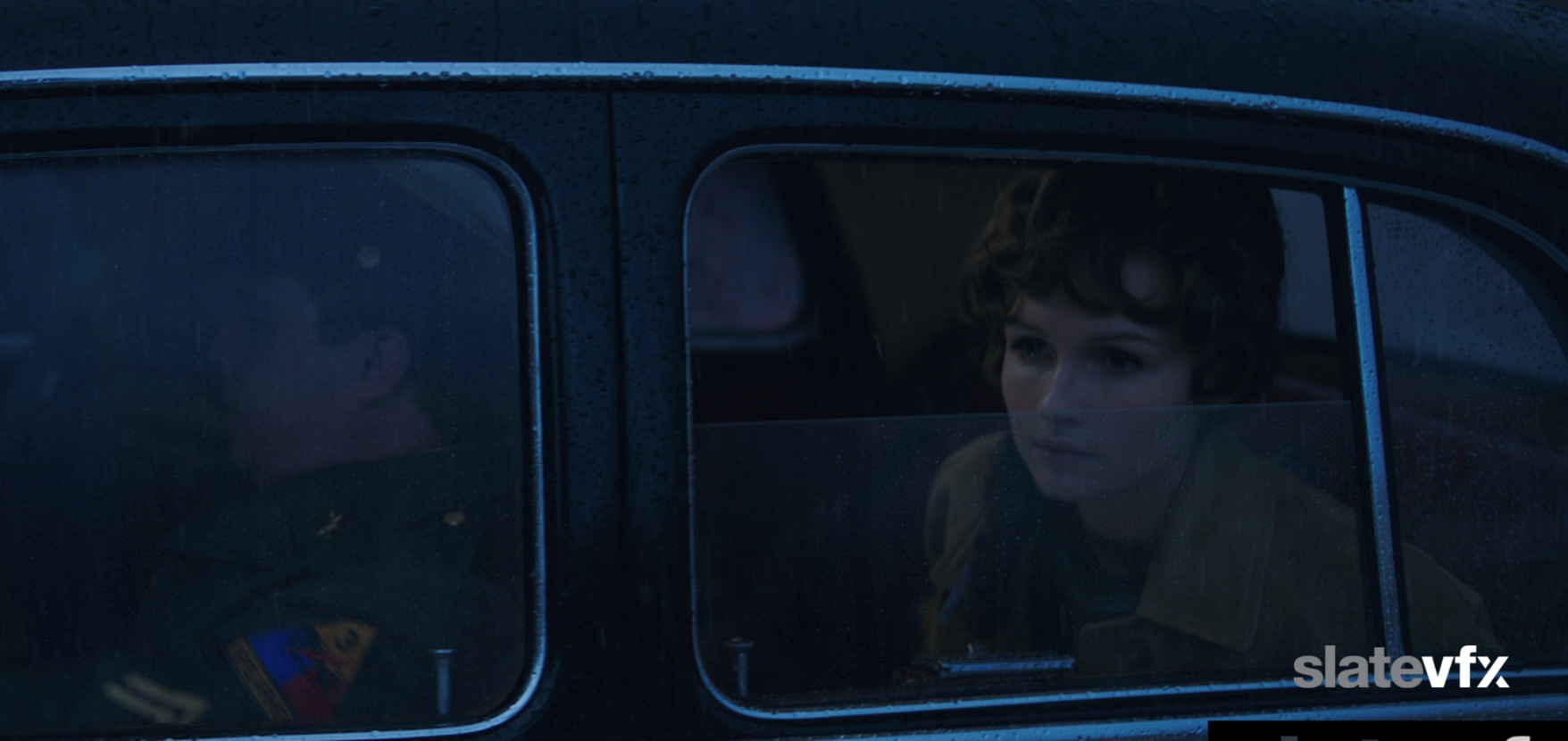
Based at Fox studios Australia in Sydney, the SLATEVFX team turned live-action studio shots into 1950s Nauheim streetscapes and the Hayride show in Shreveport, Louisiana. A series of scenes were given enhanced environments and atmosphere, ranging from fog, mist and rain to complex CG builds and set extensions.
“SLATEVFX are proud to have worked on another great Australian production, that will be celebrated by audiences globally.”
The SLATEVFX Team: Prue Fletcher, David Booth, Bryn Farrelly
Visit Slate VFX.
EQUIPMENT SERVICES AND SUPPORT
FOX LIGHTING LIGHTS UP THE STAGE ON ELVIS
Based at Village Roadshow Studios, Fox Lighting provided a variety of lighting equipment, including:
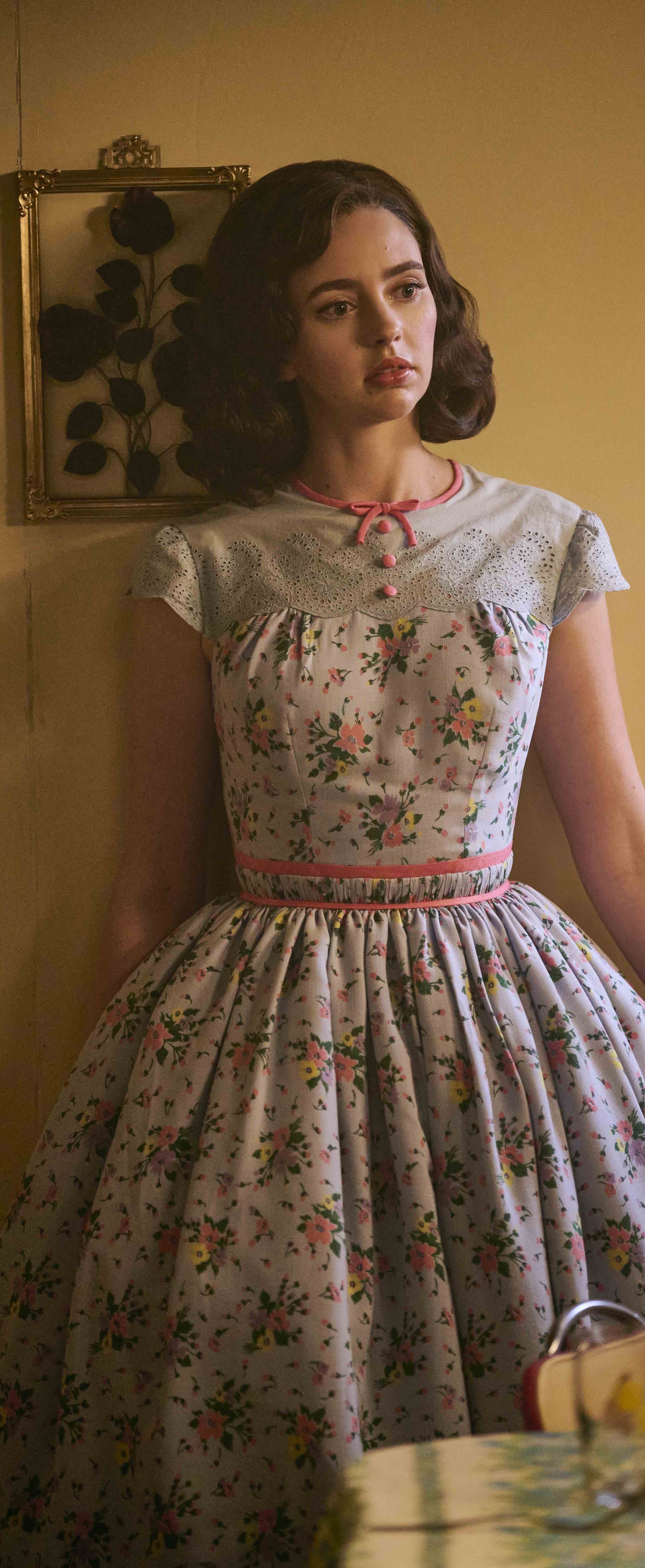
- ARRIMAX 18K Par kits
- Big Bee Motor Yoke Kits
- 30k Maxi Panels
- 24k Dinos
- 6 Light Mini Brutes
- 20k Fresnels
- 5k Fresnels
- 2k & 1k Fresnels
- Par Can 64
- RDM Iso Opto
- DMX Cable
- Dimmers / Switches
- Textiles & Scaff Frame kits
- Power Distribution Systems & Cabling
- Rigging
- Crank Stands
- Cable Ramps
Image left: Natasha Bassett as Dixie Locke in Warner Bros. Pictures’ drama ELVIS, a Warner Bros. Pictures release. Credit-. Kane Skennar. © 2022 Warner Bros. Entertainment Inc. All Rights Reserved.

All Rights Reserved.
Visit Fox Lighting.
HELIGUY TAKE TO THE GOLD COAST SKY ON ELVIS
Heliguy worked on 2nd Unit alongside DOP Jay Torta, shooting on location in the Gold Coast Hinterland.


The team covered a variety of scenes, ranging from tracking limousines speeding through the bush on a long lens to precise techno-crane style moves at the Fairground.

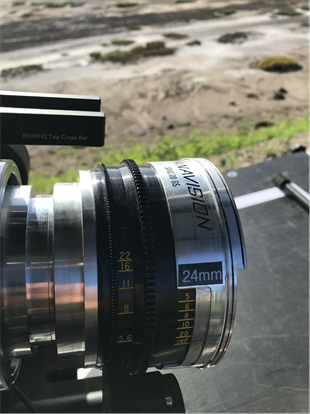
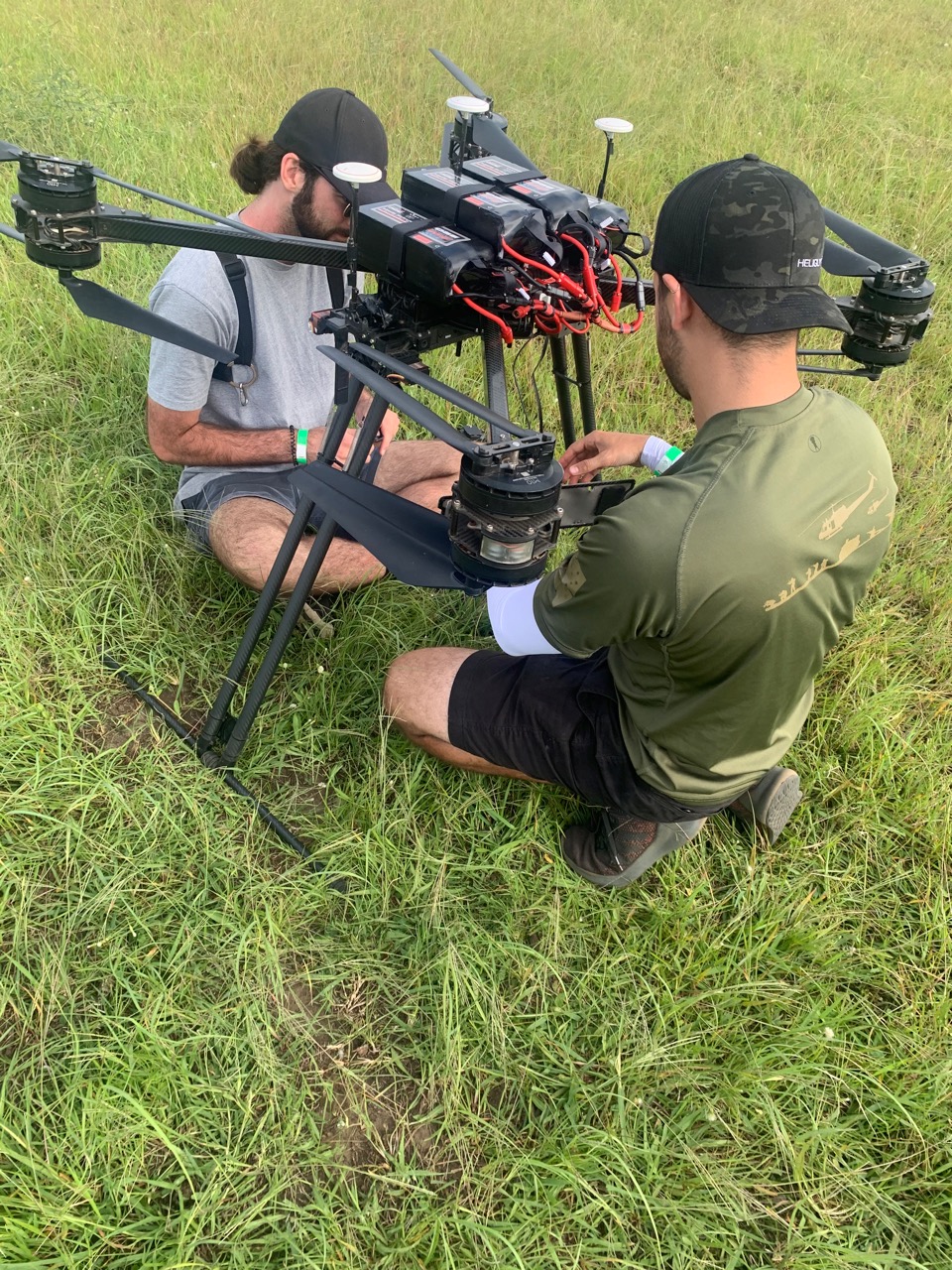
The team used their Heliguy Turbine X8 drone, Arri Alexa Mini LF and Panavision Sphero 65 lenses. Shooting with the Sphero 65 lenses lent a classic look to the images, perfectly complimenting the set design and art direction to give the feel of the historic time period.

Check out Heliguy’s showreel here
Visit Heliguy
PANAVISION QUEENSLAND PROUD TO SUPPORT DOP MANDY WALKER, (ACS, ASC) ON ELVIS
When Director Baz Luhrmann approached cinematographer Mandy Walker, ACS, ASC about collaborating on his new film Elvis, “I was extremely excited,” Walker shares. “Elvis was the King, and his experiences and rise to fame were larger than life.”
Walker and Luhrmann had previously teamed on the director’s epic 2008 feature Australia. As the cinematographer dove into prep on Elvis, she adds, “I worked with Baz and [producer, production designer and costume designer] Catherine Martin to research movies, art, photographic references and other inspirations that tied to Baz’s vision. Then I started exploring the technical aspects of how we could express those ideas.”

Sourcing her lens package from Panavision, the cinematographer opted to employ Panavision’s Sphero 65 large-format spherical optics as well as the company’s T Series anamorphic lenses. Walker had previously used Sphero 65s on the features The Mountain Between Us and Mulan. “Those lenses are great at showing wide, grand frames as well as intimate close-ups with shallow depth of field,” she explains. “For the beginning of Elvis’s life through the 1960s, we used this format.
“To show the transition of Elvis’s life when he went to Las Vegas, we went anamorphic,” Walker continues. “That helped delineate his historical journey. Of course, we weren’t shooting in script order, so we had to jump from one format to the other all the time!”
In selecting the lens package, Walker and Luhrmann met with Dan Sasaki, Panavision’s senior vice president of optical engineering and lens strategy, in August 2019. “We started by talking about the style of the movie, the visual language of the time, and the history of Elvis’s life,” Walker recalls. “Dan and his team then added characteristics to the lenses that enhanced the look we wanted — not too clean, and keeping a cinematic look as opposed to an electronic feel. Dan works in a way that is technical, but he can interpret the emotional feel you want in a lens.”

Sasaki is based out of Panavision’s headquarters in Woodland Hills, California, but the Elvis production received its equipment through Panavision’s local Queensland facility. “Paul Jackson [managing director for Panavision Australia] was also part of our collaboration,” Walker shares. “He came in to meet with Baz and myself and talk about how we would liaise so the different lensing and cameras would flow perfectly for the schedule.”
Principal photography spanned approximately 13 weeks, throughout which “it was important that the cinematography, art department, wardrobe and makeup were all on the same page,” Walker reflects. “During preproduction, Baz is meticulous about shooting tests with each and every aspect together, so when we shoot the movie, we are all in harmony.
“Working with Baz is always so fulfilling. He runs the set like a conductor, constantly communicating during the day with all departments. It’s a very rewarding experience for everyone — Baz makes us all feel part of the process in a respectful and inclusive way.”
Mandy Walker, Cinematographer on Elvis.
Visit Panavision
SHOWGROUP – THE TRAVEL EXPERTS
Showgroup kept things organised by looking after travel logistics for the cast and crew. The team booked 859 flights and 21,038 nights in hotels and 632 vehicles for the production.
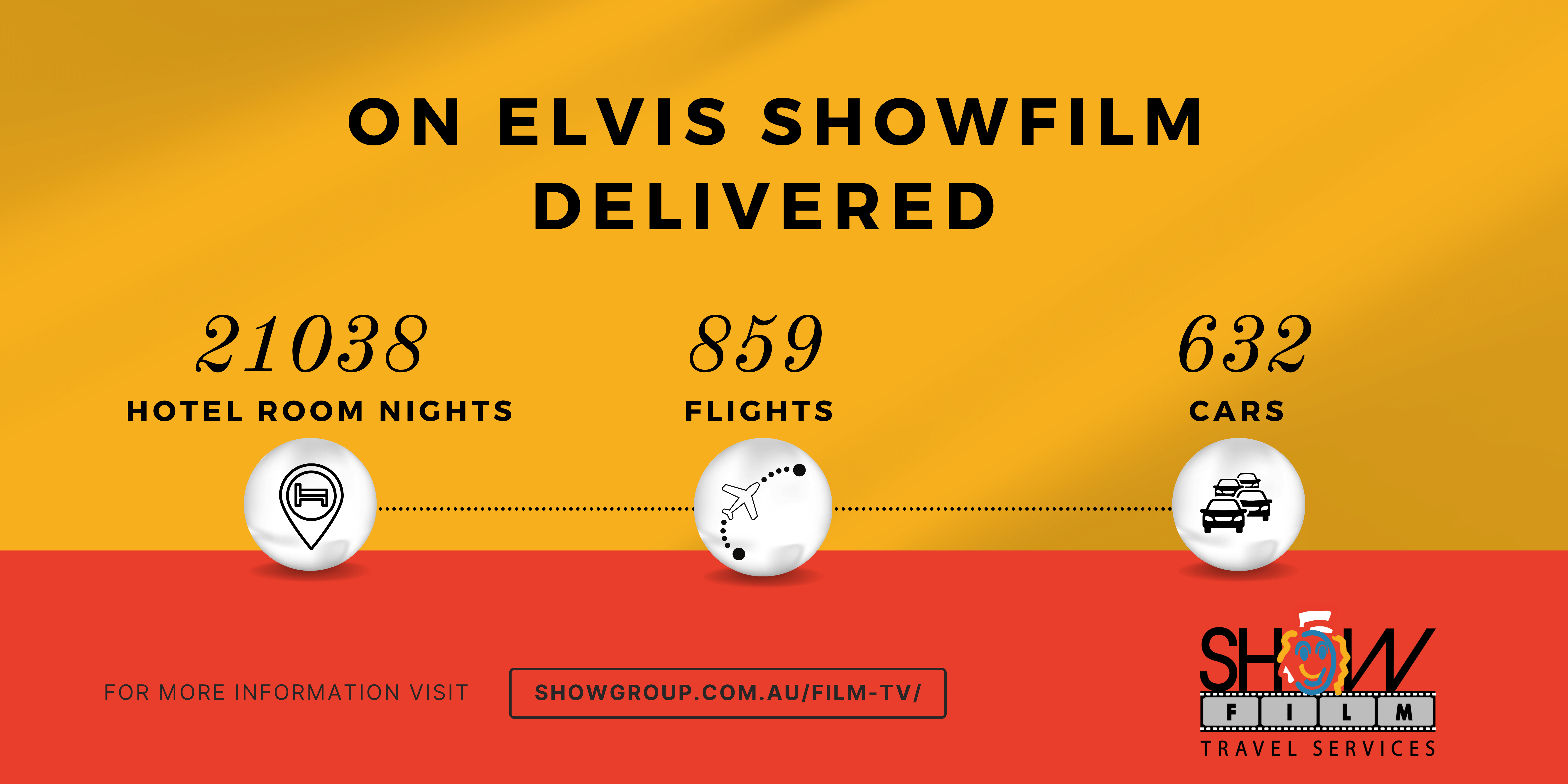
Contact the Showgroup team for all your travel requirements.
AUSTRALIAN STATE GOVERNMENT POST & VFX SCREEN INCENTIVES SUPPORT
SCREEN NSW
Elvis was supported by the Screen NSW 10% Post Digital and Visual Effects (PDV) rebate incentive program.

Contact Sue McCreadie at [email protected].
Visit Screen NSW.
SCREENWEST
Screenwest was able to support the Elvis production with a 20% Post, Digital and VFX Incentive (PDV) for a package of VFX shots completed in Western Australia.

Screenwest’s PDV incentive is the highest state PDV incentive in Australia. Western Australian-based VFX talent completed over 250 shots for the film.
If you’d like to take advantage of Western Australia’s incentives for your upcoming post, digital or VFX work, chat to Tenille Kennedy, Scripted Executive at Screenwest.
Visit Screenwest.
SOUTH AUSTRALIAN FILM CORPORATION
The South Australian Government through the South Australian Film Corporation also supported the visual effects for this film through its 10% Post, Digital & VFX incentive with Rising Sun Pictures working on this film. Adelaide-based MPC and Resin also provided visual effects on this production.

Contact Julie Ryan, Production Executive [email protected].
Visit South Australian Film Corporation.
VICSCREEN
VicScreen supported Elvis through the Victorian Screen Incentive, with Melbourne VFX studios Luma and Method delivering visual effects for the production.

Contact, Kirsten Badcock, Head of Marketing and Screen Production Attraction, [email protected].
Visit VicScreen.
THANKS TO
